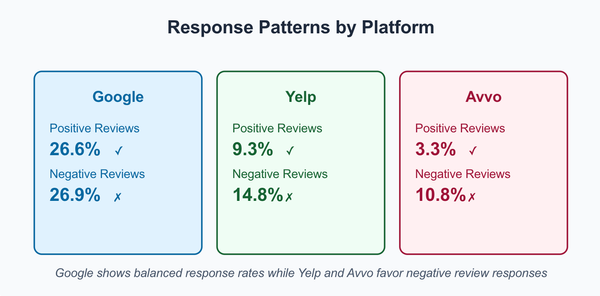Legal Noise Level Limits and Their Impact on Worker Health: A Data-Driven Examination

Noise pollution has become a significant issue for everyone, including workers, commoners, governing bodies, and the environment. People working in the construction, manufacturing, and entertainment industries sound sectors are most prone to hearing loss and other health risks as they constantly have to deal with sharp sound frequency in workspaces.
A World Health Organization (WHO) study shows that around 1.1 billion (aged 12-35) risk losing their hearing ability due to unhealthy listening habits or sound pollution. To tackle this issue, government and regulatory bodies have set legal noise level limits, such as OSHA noise standards, WHO regulations, etc, to protect workers' health. But are these regulations really effective? Are they really making an impact on worker well-being and environmental protection? Let’s find out!
Signs That Your Workplace Sound Levels are Higher Than Expected
High noise levels can pose serious risks, especially when they continue over long periods. Luckily, there are tools available to measure these levels and help keep work environments safe. Let’s discuss some common signs of a workplace with harmful sound levels and tools to mitigate the risk.
Warning Signs of High Noise Levels in the Workplace
Here are some common signs that workplace noise levels might be too high:
- Ringing or Humming in Your Ears After Work: If you leave work and hear a ringing or humming in your ears, it’s a sign that your hearing has been affected by high noise levels. This condition is called tinnitus and can be an early warning of potential hearing damage.
- Difficulty Talking to Someone Nearby Without Raising Your Voice: When you need to shout to communicate with someone standing within arm’s reach, noise levels are likely too high. Safe noise levels should allow for easy conversation without yelling.
- Temporary Hearing Loss: If sounds are muffled or you notice a temporary reduction in your hearing after work, this can mean that noise levels are straining your ears. Over time, this temporary hearing loss can become permanent if left unchecked.
Tools to Help Measure and Control Workplace Noise
To manage and reduce noise exposure, workplaces can use tools designed to measure sound levels:
- Sound Level Meters: These meters are handheld devices that give instant readings, allowing you to check noise levels in different areas.
- Noise Dosimeters: Workers wear these devices, which measure cumulative noise exposure throughout a shift. This helps understand overall noise levels across a workday.
- Octave Band Analyzers: These analyze specific sound frequencies, helping identify where loud sounds are coming from and how to target them with noise-reduction strategies.
Keeping an eye on these signs and using the right tools can protect workers’ hearing and create a safer, more comfortable workplace.
The Health Risks of Excessive Noise Exposure in a Workspace
When loud noise enters our ears for an extended time, it kills the nerve endings, and more exposure results in worse health issues. Understanding the risks of excessive sound exposure is the first step in implementing effective noise level limits:

1) Noise-induced hearing loss (NIHL)
NIIHL is the most direct consequence of harmful sound listening habits for an extended period. This condition can be prevented but becomes irreversible once a person gets it. A study by the Centers for Disease Control and Prevention (CDC) states that about 22 million U.S. workers get exposed to hazardous noise levels each year. Moreover, a staggering population of 48 million Americans suffers from hearing loss linked to occupational noise exposure.
2) Tinnitus
Tinnitus is a condition in which you experience constant ringing or buzzing sound in your ears. It is quite irritating and can also lead to severe headaches and other health risks. According to the American Tinnitus Association, over 50 million Americans experience some form of tinnitus. Among these, about 20 million people face chronic cases, and it is serious for over 2 million people.
3. Cardiovascular Health Implications
Noise doesn’t just affect hearing; long-term exposure to high noise levels can also cause an increased risk of cardiovascular disease. Research published in 2018 found that chronic noise exposure could lead to a 3-8% higher risk of heart disease. Workers in industries with high noise levels, such as construction and transportation, are particularly vulnerable to these cardiovascular issues.
4. Cognitive Impairment
It is not just physical harm; hearing too loud sounds > 95 dB for long can also impair cognitive function. It reduces workers' ability to concentrate, process information, and make decisions correctly and on time.
A study by the National Institute for Occupational Safety and Health (NIOSH) found that workers exposed to excessive noise showed reduced cognitive performance and slower reaction times. This is a significant concern in high-precision industries like aviation, manufacturing, and healthcare, where cognitive performance is a must for safety and productivity.
Legal Noise Limits for Workers in Different Industries
Legal noise regulations are designed to reduce hearing damage and other health risks. However, compliance with these regulations and their effectiveness in improving worker health varies significantly.
Noise Control Framework for Protecting Workers Well-Being
Governments and regulatory bodies worldwide are taking strict measures to implement noise-level regulations to mitigate these health risks. These legal limits are designed to protect workers from harmful noise exposure, with some regions enforcing stricter rules than others.
OSHA and Hearing Conservation Program
In the U.S., the Occupational Safety and Health Administration (OSHA) sets the permissible noise exposure limits for workplaces. OSHA regulations specify a maximum allowable noise level of 90 decibels (dB) over an 8-hour workday. The safe exposure time is halved for every 5 dB increase in noise. For example, at 95 dB, workers can only be exposed for 4 hours.
OSHA noise standards also require businesses to implement a Hearing Conservation Program (HCP) for workers exposed to noise levels over 85 dB to protect workers. This program includes regular hearing tests, noise monitoring, and the provision of hearing protection equipment.
OSHA Decibel Limits:
- 85 dB over 8 hours: Action level (requires hearing protection)
- 90 dB over 8 hours: Permissible exposure limit
The National Institute for Occupational Safety and Health (NIOSH) also sets guidelines, recommending even stricter exposure limits of 85 dB over 8 hours to prevent hearing damage.
European Union: Stricter Guidelines
In the European Union (EU), noise exposure limits are governed by the EU Directive on Noise at Work, which mandates the following:
- 80 dB: Employers must take steps to reduce noise exposure.
- 85 dB: Hearing protection must be provided if the exposure exceeds this level.
Countries such as the UK and Germany have even stricter regulations in certain industries, often reducing the permissible exposure limit below 85 dB, based on local data and research.
Australia: Workplace Noise Standards
The Safe Work Australia guidelines mirror the standards set by OSHA and the EU. The maximum allowable exposure is set at 85 dB for an 8-hour workday. Employers must implement preventive measures for workers exposed to noise levels above this threshold, including hearing protection, regular hearing tests, and noise assessments.
- 85 dB over 8 hours: Action level (requires hearing protection, noise assessments)
- 90 dB over 8 hours: Maximum allowable exposure limit
Canada: Occupational Noise Exposure Guidelines
Canada's Centre for Occupational Health and Safety (CCOHS) follows a framework similar to OSHA noise standards. The maximum permissible exposure limit is 85 dB over an 8-hour workday, requiring hearing protection when noise levels exceed safe decibel levels. Additionally, the Canadian Standards Association (CSA) provides guidelines for employers to assess and control noise exposure in the workplace.
In a Nutshell!
Legal limits on noise levels are crucial for safeguarding workers against the detrimental effects of noise exposure. Nonetheless, numerous sectors continue to face compliance challenges, and regulations' efficacy differs. Improved monitoring, increased education, and implementation of noise-reducing technologies are essential to minimize the health risks associated with excessive noise exposure.
Going forward, stronger enforcement and investment in worker protection will be essential for ensuring the health and safety of workers globally. Hire the best professional lawyer if you need any legal help regarding noise control requirements in your area!





